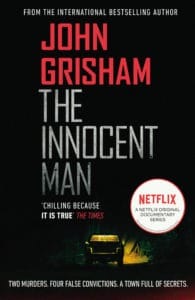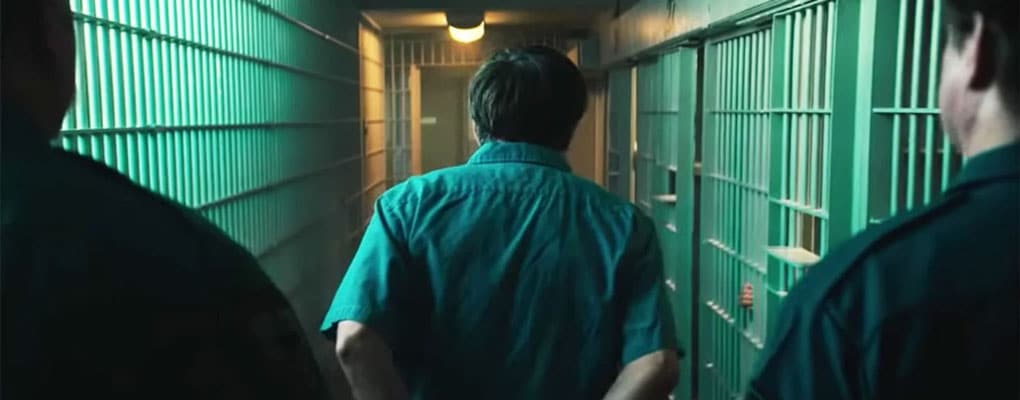Reviews
The Innocent Man: the verdict
John Grisham is the world’s most famous, popular and successful legal thriller writer. With more than 40 books to his name, the Arkansas-born novelist has seen a quarter of those adapted into multi-million dollar blockbusters starring some of Hollywood’s biggest names.
Generally, when Grisham hears about an incredible real-life case, he’ll read up on it and store the information away, perhaps to use as inspiration for one of his future courtroom page turners. When he heard the story of the wrongful conviction of Ron Williamson, though? He knew he had to cover the story specifically and precisely. So he set about writing his only non-fiction book to date, 2006’s The Innocent Man: Murder and Injustice in a Small Town.
 His work was celebrated and – unsurprisingly – turned out to be yet another hit for the Runaway Jury scribe. With the key themes of The Innocent Man being police and judicial corruption, legal inequity and wrongful conviction, it was no huge surprise when Netflix commissioned a documentary series to be made around it.
His work was celebrated and – unsurprisingly – turned out to be yet another hit for the Runaway Jury scribe. With the key themes of The Innocent Man being police and judicial corruption, legal inequity and wrongful conviction, it was no huge surprise when Netflix commissioned a documentary series to be made around it.
The enormous success of Making a Murderer and The Staircase proved that the public has quite the appetite not only for long-form true crime documentaries created in almost forensic detail, but when there’s unjustness, exploitation and mystery surrounding the case, that hunger is even more ravenous. In short, The Innocent Man and Netflix are a match made in heaven.
Grisham’s book concerns itself primarily with the bogus conviction of Williamson, hence the singular ‘Man’ in the title. But explored further, as director Clay Tweel does here across the six 45 minute episodes, we discover that not only are there two confirmed ‘innocent men’, it’s highly probable that there are four.
We’ll get to that shortly. First? The part of the story which John Grisham focused on…
In December of 1982, in the small city of Ada in Oklahoma, 21-year-old Debbie Sue Carter was raped and strangled with an electrical cord in her home. Eventually, two men would be found guilty of the crime, Dennis Fritz and Ron Williamson. School teacher Fritz was sentenced to life without parole while his apparent accomplice, former baseball protégé Williamson, received the death sentence. He would spend eleven years on Death Row and come within five days of execution before DNA evidence exonerated him (and Fritz) in 1999.
We soon learn that local police and the Pontotoc County District Attorney Bill Peterson (a man who will not be watching this series, you’d imagine…) oversaw coerced false confessions, created unreliable witness accounts, withheld exculpatory evidence (that which is favorable to the defendant’s plight) from the court and submitted tainted and misleading physical ‘evidence’ to get their convictions.
It’s a shocking case. What’s more shocking, though? There’s a pretty good chance this wasn’t just a one-off. As the documentary explains, two years later, in the August of 1984, a convenience store clerk by the name of Denice Haraway disappeared in Ada, eventually being found dead some 40 miles east of the city. Composite sketches apparently drew police to Tommy Ward and Karl Fontenot, who later confessed, were tried and sentenced to life in prison. It was a crime that was to be the focus of Robert Mayer’s bestselling 1987 book The Dreams of Ada. Mayer – along with Grisham – pop up occasionally throughout the six instalments to help elaborate on the story and give their takes on what exactly went on – and what went wrong.
Piqued your interest? Well, we’re not surprised. Here’s the official Netflix trailer for The Innocent Man…
Four and a half hours may seem quite a long running time to anyone not used to taking deep dives into such cases, but compared to, say, the twelve-odd hours of The Staircase, this is something of a breeze. While The Innocent Man is four and a half hours of documentary making chopped into six pieces, each episode is neatly separated from each other by a series of nice – albeit slightly contrived – twists and cliffhangers. Some of which genuinely stun.
The story is told with a fragmented chronology that would make even Inception director Christopher Nolan’s head spin. Perhaps due to necessity, but it’s also used as something of a stylistic device. Pay attention and it’s not a problem, but nip to the kitchen for a cup of tea without pausing and you may return with a brew, but little clue as to what’s happening or what you’ve missed. The constant skipping between the two cases doesn’t help on that front either, although it does help illustrate the similarities between the two cases (and there are plenty of those).
Ada sounds, with good reason, like exactly the kind of place you can imagine a John Grisham novel being set, with its insular mentality, endemic practices and high-status families sat atop the city’s hierarchy. There are hints as to what makes Ada what it is, but you may be left wanting a little more background on the specifics of seemingly fascianting history. But perhaps those details are somewhat irrelevant. After all, as we’ve seen with the likes of Making a Murderer and The Staircase, such cases are hardly unique. Maybe we don’t need to know the ins and outs of Ada.
As with its two famous forebears, we’re only really presented with one side of the story here, something that the majority of modern documentaries are somewhat guilty of. That said, one local police officer is given an outlet to outline his thoughts on why Oklahoman law enforcement isn’t institutionally corrupt and the lead investigator, District Attorney and DA’s Assistant all refused to be interviewed. So it’s not a complete railroading.
The closing titles of the final episode leave us with a truly staggering statistic. Recent research suggests that 4% of American convicts are serving sentences for crimes they didn’t commit. That may sound like a small percentage. You could even argue that such a number is inevitable and collateral damage. But in a country with such an absurdly high prison population, that equates to a simply unbelievable 90,000 men and women languishing in US jails, wrongfully convicted.
So while the overarching theme of this documentary series may not be particularly fresh, it’s a story that needs telling again and again until something fundamental in American law changes. For all the recognisable tropes on show here, The Innocent Man (it really should be ‘Men’…) is still powerful and retains the ability to shock. We discover that Ron Williamson suffered from severe mental health issues in jail and the ‘before and after’ photographs of the man are truly unbelievable. The toll taken on the poor innocent man is not only obvious, it’s downright disgusting.
The Innocent Man is available to watch now on the streaming giant. We’d recommend setting aside a couple of afternoons and evenings and getting it seen. While it may not quite have the same impact as Netflix’s previous ‘wrongful conviction’ documentary series, it’s still top quality television that really packs a punch.
There you have it – our The Innocent Man review! Have you seen the series yet? Let us know your thoughts in the comments below – then head over and read an extract from John Grisham’s book and check out our interview with the show’s director.


Please note: Moderation is enabled and may delay your comment being posted. There is no need to resubmit your comment. By posting a comment you are agreeing to the website Terms of Use.